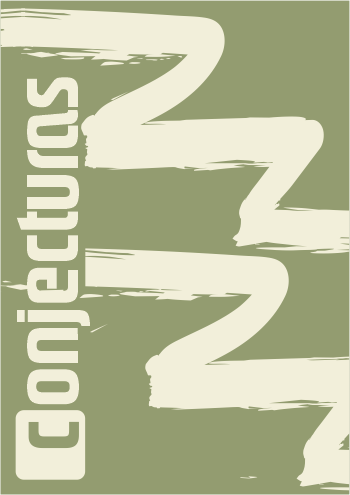Longos trechos contíguos em homozigose identificados por análise cromossômica por microarranjos em uma população com deficiência intelectual e transtorno do espectro autista do Brasil Central
DOI:
https://doi.org/10.53660/CONJ-2120-2X70Palavras-chave:
alelos homozigotos, microarranjo, transtornos do neurodesenvolvimentoResumo
Longos trechos contínuos em homozigose (LCSH) são regiões ininterruptas de alelos homozigotos originados por consanguinidade, dissomia uniparental (UPD), mecanismos de reparo de DNA e haplótipos ancestrais. Identificamos regiões genômicas de LCSHs através do CMA, avaliando suas frequências e mecanismo de origem em pacientes com deficiência intelectual e/ou transtorno do espectro autista do serviço público de saúde do Brasil Central. Em 90% dos pacientes, pelo menos um LCSH foi identificado com um total de 265 LCSHs observados. De 265 LCSHs, 59% eram recorrentes, observados nos cromossomos 11, 16 e X, e 41% eram não recorrentes e observados nos cromossomos X e autossomos, exceto no cromossomo 19. LCSHs não recorrentes foram originados por consanguinidade em 9,7% dos pacientes, por possível reparo de DNA ou mecanismos de haplótipos ancestrais em 85,4% dos pacientes e por possível UPD segmentar em 4,9% dos pacientes. Nossos achados mostraram a utilidade do CMA de alta densidade de SNPs na identificação de LCSHs, destacando a importância de caracterizar o perfil de LCSHs na população brasileira, especialmente na população do Brasil Central.
Downloads
Referências
ALABAF, S. et al. Physical health in children with neurodevelopmental disorders. Journal of Autism and Developmental Disorders, v. 49, n. 1, p. 83-95, 2019.
ALI, M. A.M. et al. Additive diagnostic yield of homozygosity regions identified during chromosomal microarray testing in children with developmental delay, dysmorphic features or congenital anomalies. Biochemical Genetics, v. 58, n. 1, p. 74-101, 2020.
American Psychiatric Association (APA). Diagnostic and Statistical Manual of Mental Disorders (DSM-5®). American Psychiatric Pub, 2013.
BARRIE, E. S. et al. Pericentromeric regions of homozygosity on the X chromosome: Another likely benign population variant. European Journal of Medical Genetics, v. 61, n. 7, p. 416-420, 2018.
CARVALHO, C.; LUPSKI, J. R. Mechanisms underlying structural variant formation in genomic disorders. Nature Reviews Genetics, v. 17, n. 4, p. 224-238, 2016.
CEBALLOS, F. C. et al. Runs of homozygosity: windows into population history and trait architecture. Nature Reviews Genetics, v. 19, n. 4, p. 220-234, 2018.
CHAVES, T. F. et al. Long contiguous stretches of homozygosity detected by chromosomal microarrays (CMA) in patients with neurodevelopmental disorders in the South of Brazil. BMC Medical Genomics, v. 12, n. 1, p. 1-13, 2019.
CHAVES, TF. Variações genômicas e longos trechos contínuos de homozigose detectados por array-CGH em pacientes com distúrbios do desenvolvimento cerebral: interpretação e implicações. Dissertation, Federal University of Santa Catarina, Florianópolis. 2018. Available from: https://repositorio.ufsc.br/handle/123456789/198271.
GIBSON, J.; MORTON, N. E.; COLLINS, A. Extended tracts of homozygosity in outbred human populations. Human Molecular Genetics, v. 15, n. 5, p. 789-795, 2006.
HOPPMAN, N. et al. Patterns of homozygosity in patients with uniparental disomy: detection rate and suggested reporting thresholds for SNP microarrays. Genetics in Medicine, v. 20, n. 12, p. 1522-1527, 2018.
IOUROV, I. Y. et al. Long contiguous stretches of homozygosity spanning shortly the imprinted loci are associated with intellectual disability, autism and/or epilepsy. Molecular Cytogenetics, v. 8, n. 1, p. 1-8, 2015.
IQBAL, Z.; VAN BOKHOVEN, H. Identifying genes responsible for intellectual disability in consanguineous families. Human Heredity, v. 77, n. 1-4, p. 150-160, 2014.
ISMAIL, F. Y.; SHAPIRO, B. K. What are neurodevelopmental disorders? Current Opinion in Neurology, v. 32, n. 4, p. 611-616, 2019.
KEARNEY, H. M.; KEARNEY, J. B.; CONLIN, L. K. Diagnostic implications of excessive homozygosity detected by SNP-based microarrays: consanguinity, uniparental disomy, and recessive single-gene mutations. Clinics in Laboratory Medicine, v. 31, n. 4, p. 595-613, 2011.
KU, C. S. et al. Regions of homozygosity and their impact on complex diseases and traits. Human Genetics, v. 129, n. 1, p. 1-15, 2011.
LI, L. H. et al. Long contiguous stretches of homozygosity in the human genome. Human Mutation, v. 27, n. 11, p. 1115-1121, 2006.
OMAR, N.; KOKAB, F. Intellectual disability among special children and its associated factors: A case control study, Lahore Pakistan. The Journal of the Pakistan Medical Association, v. 69, n. 5, p. 684-689, 2019.
PAJUSALU, S. et al. The diagnostic utility of single long contiguous stretches of homozygosity in patients without parental consanguinity. Molecular Syndromology, v. 6, n. 3, p. 135-140, 2015.
SAKOFSKY, C. J.; MALKOVA, A. Break induced replication in eukaryotes: mechanisms, functions, and consequences. Critical Reviews in Biochemistry and Molecular Biology, v. 52, n. 4, p. 395-413, 2017.
SCHROEDER, C. et al. Genome-wide UPD screening in patients with intellectual disability. European Journal of Human Genetics, v. 22, n. 10, p. 1233-1235, 2014.
SILVA, M. et al. European guidelines for constitutional cytogenomic analysis. European Journal of Human Genetics, v. 27, n. 1, p. 1-16, 2019.
SUND, K. L. et al. Regions of homozygosity identified by SNP microarray analysis aid in the diagnosis of autosomal recessive disease and incidentally detect parental blood relationships. Genetics in Medicine, v. 15, n. 1, p. 70-78, 2013.
THAPAR, A; COOPER, M.; RUTTER, M. Neurodevelopmental disorders. Lancet Psychiatry, v. 4, n. 4, p. 339-346, 2017.
WAGGONER, D. et al. Yield of additional genetic testing after chromosomal microarray for diagnosis of neurodevelopmental disability and congenital anomalies: a clinical practice resource of the American College of Medical Genetics and Genomics (ACMG). Genetics in Medicine, v. 20, n. 10, p. 1105-1113, 2018.
WANG, J.C. et al. Regions of homozygosity identified by oligonucleotide SNP arrays: evaluating the incidence and clinical utility. European Journal of Human Genetics, v. 23, n. 5, p. 663-671, 2015.
Downloads
Publicado
Como Citar
Edição
Seção
Licença
Copyright (c) 2022 Conjecturas

Este trabalho está licenciado sob uma licença Creative Commons Attribution 4.0 International License.



